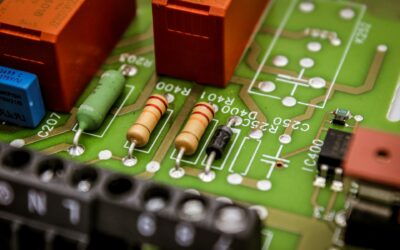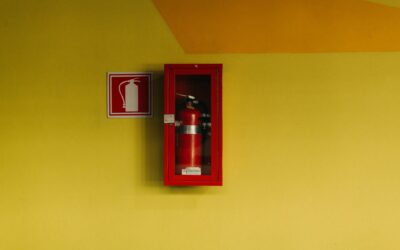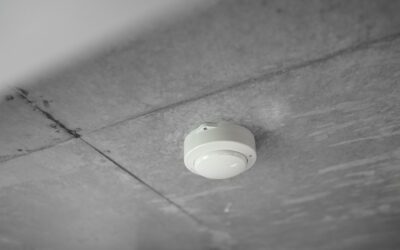Keeping your home safe is important for you and your family. One way to protect your home is by installing a good fire alarm system. Fire alarms can save lives by alerting you to fire dangers early. They give you time to act before things get worse.
Fire alarm systems come in different types and offer many benefits. Each type has its own way of detecting fires and making sure you stay safe. Knowing which one to choose can sometimes be confusing, but once you understand them, it becomes clear why they are essential for every home.
Taking steps to install and maintain fire alarms correctly is crucial. It ensures the alarms work when you need them the most. This article will guide you through the basics, from selecting the right type to keeping it in top shape. This knowledge can help make your home safer and give you peace of mind.
Different Types of Fire Alarms and Their Benefits
There are several types of fire alarms available, each with unique features and benefits. The most common types include ionization smoke alarms, photoelectric smoke alarms, and combination alarms. Ionization smoke alarms are good at detecting fast, flaming fires. They use a small amount of radioactive material to sense smoke particles. These alarms are effective but can sometimes be triggered by steam or cooking fumes.
Photoelectric smoke alarms, on the other hand, are better at detecting slow, smoldering fires. They use a light sensor to detect smoke particles that enter the alarm chamber. These alarms are less likely to be set off by cooking and bathroom steam, making them ideal for areas near kitchens and bathrooms. Combination alarms offer the best of both worlds by incorporating both ionization and photoelectric sensors. They provide comprehensive coverage, making them a popular choice for many households.
In addition to these, there are also heat alarms and carbon monoxide alarms. Heat alarms are designed to detect rapid temperature increases, which can indicate a fire. They are best suited for areas prone to dust or fumes that might cause false alarms in smoke detectors. Carbon monoxide alarms detect the presence of harmful carbon monoxide gas, which is produced by burning fuel and can be deadly if not detected early. Each type of alarm has its own set of benefits, and knowing these can help you choose the right one for your home.
Step-by-Step Guide to Installing a Fire Alarm System in Your Home
Installing a fire alarm system in your home is a straightforward process if you follow the steps carefully. First, you need to gather all the necessary tools and equipment. You’ll need the fire alarms themselves, a drill, screws, a ladder, and a pencil for marking.
Begin by selecting the locations for your fire alarms. Ideally, alarms should be placed on every level of your home, including the basement. They should also be installed inside every bedroom and outside each sleeping area. Make sure they are mounted on the ceiling or high on the wall, as smoke rises. Once you’ve chosen the spots, use a pencil to mark where the screws will go.
Next, drill holes at your marked spots and screw the mounting brackets into place. Once the brackets are secure, attach the alarms to the brackets. If your alarms are battery-operated, make sure to insert fresh batteries before mounting them. For hardwired alarms, you’ll need to turn off the power at the circuit breaker, connect the wires, and then mount the alarm. After installation, turn the power back on and test each alarm to make sure they are working properly. Regular testing will ensure that your alarms stay functional and ready in case of an emergency.
Maintenance Tips to Ensure Your Fire Alarms Work Properly
Maintaining your fire alarms is key to keeping your home safe. Regular upkeep ensures they function correctly when you need them most. Here are some essential maintenance tips:
First, test your fire alarms once a month. Press the test button on each unit to make sure the alarm sounds. If it doesn’t, replace the batteries or check the hardwired connections. Battery-operated alarms should have their batteries replaced at least once a year, even if they still seem to be working. It’s a good habit to swap out the batteries during a memorable time each year, like when you change your clocks for daylight saving time.
Second, keep the fire alarms clean. Dust and debris can interfere with their sensors. Use a vacuum cleaner with a soft brush attachment to gently remove any build-up from the surface of the alarms. Avoid using water or cleaning solutions as this can damage the sensors.
Next, replace the entire fire alarm unit every 10 years. Over time, the sensors can wear out and become less reliable. Check the manufacturing date on your alarms and plan to replace them accordingly.
Common Mistakes to Avoid When Setting Up Your Fire Alarm System
Setting up fire alarms improperly can put your home at risk. Avoid these common mistakes to ensure your system works effectively:
One common mistake is placing fire alarms in the wrong locations. Avoid installing them too close to kitchens or bathrooms where steam and cooking fumes can cause false alarms. Instead, place them at least 10 feet away from these areas. Also, make sure to install alarms on every level of your home, inside each bedroom, and outside each sleeping area.
Another mistake is neglecting to interconnect your fire alarms. Interconnected alarms communicate with each other, so if one goes off, they all do. This is especially important in larger homes where a fire in a distant part might not be heard without interconnected alarms. Many modern fire alarms come with interconnectivity features, so take advantage of them.
Finally, don’t forget about regular testing and maintenance. Even the best fire alarms won’t be effective if they aren’t kept in good working order. Skipping monthly tests or annual battery replacements can mean the difference between safety and disaster.
Conclusion
Fire alarms are a crucial part of keeping your home safe. Understanding the different types, knowing how to install them correctly, and maintaining them are all essential steps. By avoiding common mistakes, you can ensure that your fire alarms work when you need them most.
Having reliable fire alarms provides peace of mind and can save lives by giving you an early warning in case of a fire. This is particularly important in homes where every second counts to ensure the safety of you and your loved ones.
Want to make sure your fire alarm system is up to code and professionally installed? Reach out to us at Stalker Electric. Our team of specialists can help you with all aspects of your fire alarm needs, from installation to maintenance. Let us help you keep your home safe and secure. Contact Stalker Electric today to learn more about our services and how we can assist you in safeguarding your property.






0 Comments